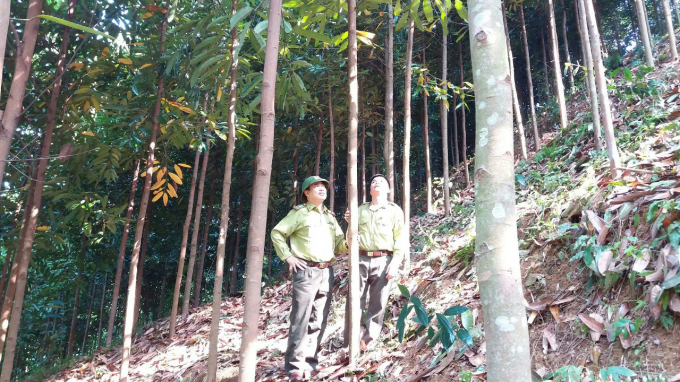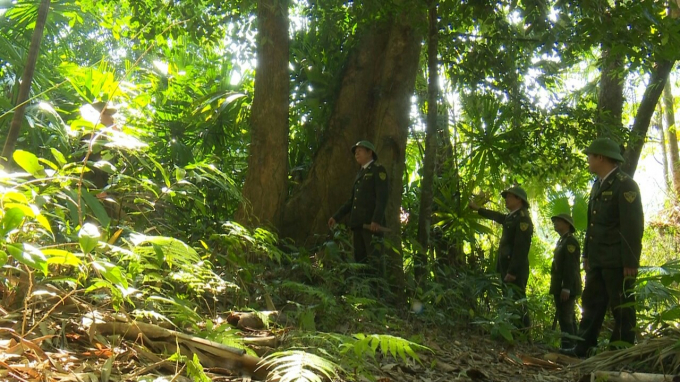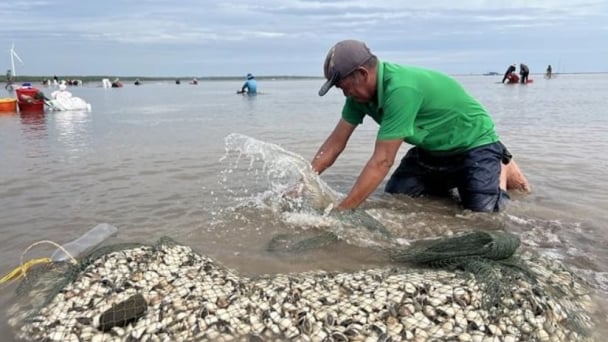May 28, 2025 | 16:48 GMT +7
May 28, 2025 | 16:48 GMT +7
Hotline: 0913.378.918
May 28, 2025 | 16:48 GMT +7
Hotline: 0913.378.918

Diversifying forest products for export is one of the important goals in the program of sustainable forestry development of Thai Nguyen province. Photo: Dong Van Thuong.
Thai Nguyen province currently has more than 352,000 hectares of natural land, of which forestry land accounts for about 50%.
Implementing the Target Program for Sustainable Forestry Development for the 2016 - 2020 period, forest management, protection and development had achieved remarkable results. Inhabitants' awareness of the importance of forests is raised.
Forestry activities had created jobs, increased incomes, and reduced the poverty rate for people, especially mountainous inhabitants, contributing to socio-economic development, ensuring national defense and security.
In the 2016 - 2020 period, Thai Nguyen had contracted with inhabitants to protect special-use forests, protective forests. The province also had supports to whom took part in protection of natural forests, with more than 110,000 hectares for organizations, households and individuals; supported communities in the buffer zone of special-use forests in 108 villages; implemented the policy of supporting rice in planting forests for 1,560 households.
Thereby, nearly 31,000 hectares of forests and more than 4 million scattered trees, mainly acacia trees had been planted. Besides, it is worthy notable that nearly 3,000 hectares of cinnamon trees had been planted in Dinh Hoa district, forming a concentrated growing area.
Mr. Duong Van Khai (Hoan hamlet, Cay Thi commune, Dong Hy district) says that up to now, his family has 25 hectares of acacia trees.
When he started afforestation, his family received 1,600 seedlings, 3 quintals of fertilizer and a supported capital of VND 1.9 million for each hectare. In the first three years, his family hired workers to take care of the trees. After 7 years, his family earns nearly VND 100 million in each hectare of planted forest. Thanks to afforestation, his family's life is more stable and better now.
However, as the area is too large, it is difficult to take care of forest trees in all over the contracting land. In addition, every year, rainstorms also cause many trees to be broken. Mr. Khai wants the government to increase one-time funding and support more fertilizer to take care of the forest.
Thai Nguyen province's sustainable forestry development program, period 2021 - 2025, with a vision to 2030, emphasizes the following overall goals: Sustainable forestry development, harmonizing socio-economic development with environmental protection, mobilizing social resources to invest in forest management and protection.
Thai Nguyen province also sets the following targets: Stabilizing the forest cover rate from 46% or more; the average growth rate of forestry production value reaching 5.5% per year or more; by 2030, the value of income per hectare from production forests will increase 2 times compared to 2020.

Diversifying forest products for export is one of the important goals in the program of sustainable forestry development of Thai Nguyen province. Photo: Dong Van Thuong.
According to Mr. Le Cam Long, Director of Thai Nguyen Provincial Forest Protection Department, Thai Nguyen province will spend more than VND 8,500 billion to implement the sustainable forestry development program. The source of the capital comes from state budget, the Forest Protection and Development Fund and other lawfully mobilized funds.
The specific goals are as followed: To effectively conserve forest ecosystems, including 1,850 hectares of protection forest, 18,000 hectares of production forest (2,000 hectares of large timber forest; 3,800 hectares of cinnamon forest; 12,200 hectares of small timber forest).
In addition, it is to minimize the loss of biodiversity in Than Sa - Phuong Hoang special-use forest, giving priority to replacing fast-growing trees with indigenous trees and valuable multi-use trees such as Menghundor, Dracontomelum duperreanum Pierre, cinnamon, etc.
Accordingly, there will be 10,000 hectares of cinnamon trees for export by 2030, more than 2,000 hectares of large timber forests and 30% of the forest area certified by FSC. In addition to wood, medicinal products from the forest are also focused, both bringing livelihoods and being regional specialties with high export value.
Recently, Dongwha Vietnam Co., Ltd - a member of Dongwha Group (Korea), which is one of the world's leading companies in the production of wood and industrial wood products, held the inauguration ceremony of Dongwha Vietnam factory in Song Cong II Industrial Park.
Dongwha Vietnam factory is built on an area of 500,000 square meters with a total investment of US$ 160 million. The factory's capacity is about 370,000 cubic meters of MDF board products per year and 4 million square meters of laminate flooring per year. The factory’s products are manufactured by high-tech, environmentally friendly and energy-saving processes.
Investments of both domestic and foreign enterprises will create great advantages of Thai Nguyen in sustainable forestry development.
Translated by Duc Thuan

(VAN) FAO’s Director-General addresses the 5th Baghdad International Water Conference.
/2025/05/26/1716-4-nongnghiep-191706.jpg)
(VAN) Chain linkages, technological innovation, and raw material zoning are three strategic pillars for the coconut industry to strongly develop and elevate its position on the global agricultural map.
![Advanced mariculture – an inevitable trend: [4] Accompanied by scientists](https://t.ex-cdn.com/nongnghiepmoitruong.vn/608w/files/sohk/2025/05/13/1941-pgsts-vo-van-nha-140958_717.jpg)
(VAN) According to Assoc. Prof. Dr. Vo Van Nha, Director of the RIA III, the development of advanced offshore mariculture is no longer an option but an essential path for Vietnam’s fisheries sector.

(VAN) Vietnam is intensifying the development of mollusk farming areas that meet international standards, aiming for sustainable growth and enhancing its export position in the global seafood market.
![Advanced mariculture – an inevitable trend: [3] Policy-driven momentum](https://t.ex-cdn.com/nongnghiepmoitruong.vn/608w/files/doanhtq/2025/05/21/0104-0616-0348-nuoi-bien-170339_789.jpg)
(VAN) To ensure the success of offshore mariculture that uses advanced technologies, it is essential to establish supportive policies that inspire both individuals and enterprises to invest with confidence.
![Advanced mariculture – an inevitable trend: [2] Outstanding results](https://t.ex-cdn.com/nongnghiepmoitruong.vn/608w/files/sohk/2025/05/12/4632-4136-nuoi-bien-11-164117_819.jpg)
(VAN) Pilot models of high-tech offshore mariculture in Vietnam, particularly in the South Central Coast region, have demonstrated exceptional economic returns and sustainability, setting a new direction for the country’s aquaculture industry.
![Advanced mariculture – an inevitable trend: [1] Moving offshore](https://t.ex-cdn.com/nongnghiepmoitruong.vn/608w/files/phucpm/2025/05/18/0252-2436-nuoi-bien-6-162148_783.jpg)
(VAN) Mariculture using advanced technology and moving offshore is an inevitable trend, as nearshore areas increasingly reveal limitations.